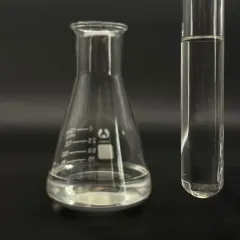Betaine surfactants
It is generated by the reaction of fatty tertiary amines and sodium chloroacetate, consisting of cocoylpropyl betaine, dodecyl betaine, cetyl betaine, and lauroyl propyl betaine. It is milder than the initial three and is presently the major surfactant in baby shampoo.
In 1940, the American DuPont Company developed and used this type of compound. Like amino acid surfactants, this kind of surfactant has strong detergency and reduced irritability, and the option is weakly acidic. Animal experiments have confirmed that this type of substance is less toxic. It is an optimal surfactant.
( surfactants in shampoos)
Amino acid surfactants
Made from a combination of coconut oil and amino acids, it is secure, gentle, and non-irritating. One of the most important point is that it is naturally weakly acidic and fulfills the pH requirements of healthy skin and hair. It is the perfect surfactant in baby hair shampoo. They are “cocoyl glycine,” “cocoyl glutamate disodium,” and so on
From the viewpoint of chemical buildings, its pH value is in between 5.5 and 6.5, which is weakly acidic and near the pH worth of human skin. Therefore, it is gentle and skin-friendly and ideal for all hair kinds; amino acid surfactants are zwitterionic and quickly soluble in water. It is easy to rinse tidy.
However it likewise has constraints. Amino acid surfactants are several to lots of times much more expensive than common surfactants, and the majority of are hair shampoos specially made for babies and little ones. The disadvantages of amino acid surfactants are that they are not abundant in foam and have weak decontamination ability.
The sensation of solidification and turbidity of surfactants in winter season is mostly as a result of the reduced temperature causing a few of its parts to crystallize or precipitate.
(surfactants in shampoos)
What if surfactant solidifies and becomes turbid in winter season?
This is a physical sensation and does not have a significant influence on the effectiveness of surfactants. In order to resolve this trouble, the complying with methods can be taken:
1. Increase the temperature: Put the surfactant in a cozy setting or boost its temperature level by heating to ensure that the crystallized or precipitated parts will progressively dissolve and the surfactant will go back to a clear state. Nonetheless, it should be kept in mind that the temperature must be avoided when heating to prevent affecting the surfactant’s performance.
2. Stirring: For surfactants that have actually solidified or ended up being turbid, they can be restored to an uniform state by stirring. Mixing can aid taken shape or sped up ingredients redisperse into the fluid and improve surfactant clearness.
3. Add solvent: In many cases, an appropriate quantity of solvent can be contributed to dilute the surfactant, therefore improving its coagulation and turbidity. Nonetheless, the added solvent should work with the surfactant and must not impact its usage effect.
Vendor of Surfactant
TRUNNANO is a supplier of surfactant with over 12 years experience in nano-building energy conservation and nanotechnology development. It accepts payment via Credit Card, T/T, West Union and Paypal. Trunnano will ship the goods to customers overseas through FedEx, DHL, by air, or by sea. If you are looking for high-quality Sodium Dodecyl Diphenil Ether Disulfonate CAS 119345-04-9, please feel free to contact us and send an inquiry.
Inquiry us

